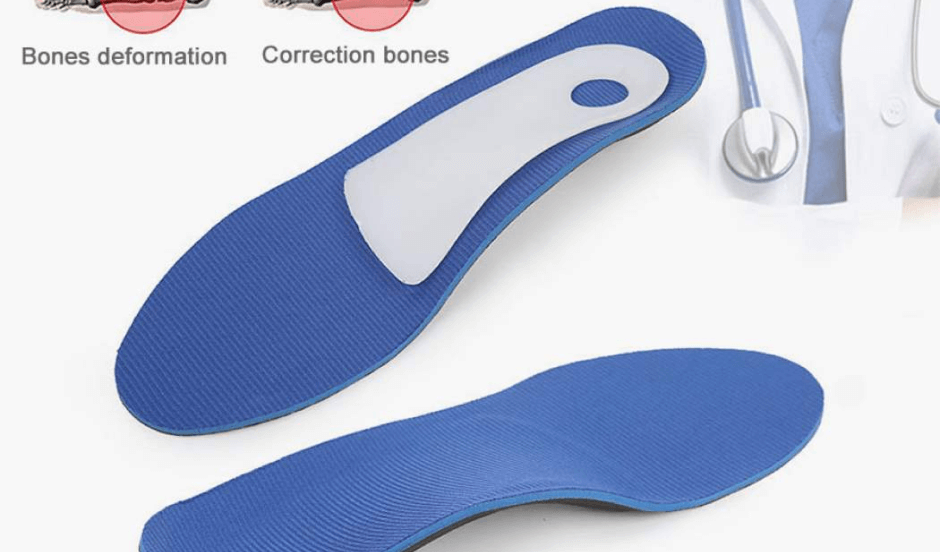From TV ads to shopping mall kiosks and foot specialty stores, there seems to be an endless supply of orthotic insoles to cure everything from bunions to back pain. The idea of foot orthotics is to realign your feet, changing the way they come in contact with the ground. That in turn translates up your body’s kinetic chain, affecting your gait and posture.
You feet form a base for your entire body, working hard to maintain balance, facilitate locomotion, and provide stability during walking, running, jumping and landing. Foot alignment affects the relationships between your ankles, knees, hips, pelvis and spine, all links in the kinetic chain. If your base of support is out of alignment, it impacts the entire chain, all the way to the neck and head.
You stabilize your body by tapping into your senses to gather information from the environment. In particular, postural stability relies on vision, the vestibular system and information from sensory nerves on the soles of your feet.
The functions of your feet are to:
- Distribute forces along the plantar surface
- Serve as a base of support for the body
- Absorb impact
- Adjust postural alignment in an upright stance
When standing or locomoting in an upright position, your feet send messages to your central nervous system about your body’s position relative to its surrounding environment.
People with flat feet (pes planus) or those with abnormally high arches (pes cavus) may experience foot pronation, where the foot and ankle roll inward. This can cause the knees to collapse inward, which in turn affects the angle at which the femur (thigh bone) meets the pelvis. Misalignment along the entire kinetic chain reduces pelvic stability, causing the pelvis to tilt forward and putting pressue on the low back. As a result, people with poor foot alignment often experience joint problems, back pain and deficits in postural stability.
Orthotics designed to realign the foot and prevent pronation may help restore optimal alignment and improve postural stability along the entire kinetic chain.
Over time, unstable posture can result in problems that increase your risk of injury and cause painful symptoms. Common symptoms include:
- Chronic fatigue, due to wasted energy as the muscles work to maintain balance and produce movement in a misaligned system.
- Stiff achy muscles in the neck, back and legs. Poor posture makes your muscles work overtime day after day, with little time for recovery.
- Pain and stiffness in your joints due to inefficient movement patterns that create wear and tear.
- Reduced balance during walking and other physical activities, increasing your risk of falls and injury.
- A sedentary lifestyle and being out of shape can dramatically reduce postural stability. Sitting for long hours in front of a computer or staring at a mobile device can be especially harmful.
Orthotic insoles are not a panacea for correcting postural instability, but they may be prescribed for certain diagnosable conditions, including:
- Prevention and treatment of running injuries
- Plantar fasciitis, a painful condition affecting the heel and sole of the foot
- Rhumatoid arthritis of the foot joints
- Circulatory problems related to diabetes
- Metatarsalgia, a painful condition that affects the ball of the foot
- Patellofemoral knee pain
- Shin splints
- Achilles tendinitis
- Bunions
Postural insoles are most effective when combined with other approaches for correcting alignment and redistributing force loads. They should be prescribed only by a reputable specialist, and only after a comprehensive diagnosis.
The sports medicine team at NYDNR combines the most advanced technologies with expertise and innovative treatment methods to diagnose and correct postural instability. Some of our technologies include:
Motion capture video
Force plate technology
Virtual reality feedback
At NYDNR, we rely on scientific methodology to get to the root of each patient’s pain, and resolve it in ways that restore function and improve overall quality of life.



























































